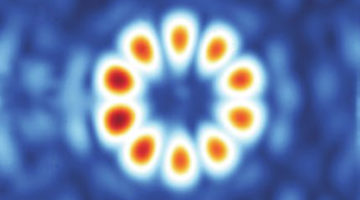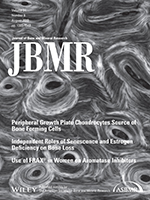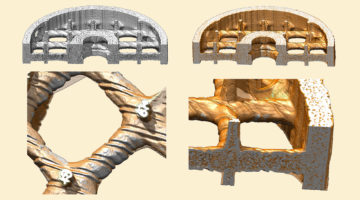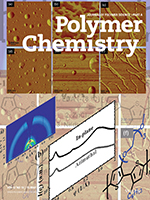Visible-light beams with orbital angular momentum (OAM) have been used in applications ranging from communications and imaging to particle manipulation. Now, researchers have generated high-quality OAM beams in the soft x-ray regime, with intriguing possibilities for future use at high-coherence, diffraction-limited light sources. Read more »
Mechanical Competence and Bone Quality Develop During Skeletal Growth
Researchers explored how bone quality and mechanical competence progress during longitudinal bone growth. Deformation at the tissue, fibril, and mineral length scales was investigated with mechanical tensile tests during small and wide-angle x-ray scattering/diffraction (SAXS/WAXD) experiments, revealing dramatic differences in mechanical resistance with age. Read more »
The Best Topological Conductor Yet: Spiraling Crystal Is the Key to Exotic Discovery
Researchers have discovered the strongest topological conductor yet, in the form of thin crystal samples that have a spiral-staircase structure. The realization of so-called topological materials—which exhibit exotic, defect-resistant properties and are expected to have applications in electronics, optics, quantum computing, and other fields—has opened up a new realm in materials discovery. Read more »
Absorber Captures Excess Chemotherapy Drugs
Researchers have designed a biomedical device for absorbing excess chemotherapy drugs during cancer treatment, characterizing the active surface layer using x-ray microtomography. The work opens up a new route to fighting cancer that minimizes drug toxicity and enables personalized, targeted, high-dose chemotherapy. Read more »![]()
![]()
Fingerprint Oxygen Redox Reactions in Batteries through High-Efficiency Mapping of Resonant Inelastic X-ray Scattering
We provide a comprehensive analysis and an explicit interpretation of the five evolving components of O-K mRIXS of the typical battery electrode that involves lattice oxygen redox reactions upon cycling. This work is the first benchmark for a complete assignment of all the important mRIXS features collected from battery materials, and thus delivers guidelines for future studies of oxygen redox reactions. Read more »
A Nanoscale View of Defect Effects on Band Structure
In the first comprehensive study at the ALS involving nanoARPES, researchers probed the electronic effects of defects in monolayer tungsten disulfide at the nanoscale. The extremely small scale of the measurements makes nanoARPES a great discovery tool that will be particularly useful for understanding new materials as they are invented. Read more »
Gas‐Phase Synthesis of Triphenylene (C18H12)
The cover image shows the triphenylene molecule as a potential precursor to two‐dimensional graphite nanosheets in the interstellar medium. The barrier‐less, exoergic nature of the reaction reveals a versatile reaction mechanism that may drive molecular mass growth processes in cold environments in deep space. Read more »
Reversible Lattice-Oxygen Reactions in Batteries
Researchers quantified a strong, beneficial, and reversible (over hundreds of cycles) chemical reaction involving oxygen ions in the crystal lattice of battery electrode materials. The results open up new ways to explore how to pack more energy into batteries with electrodes made out of low-cost, common materials. Read more »![]()
![]()
Conductive triethylene glycol monomethyl ether substituted polythiophenes with high stability in the doped state
Researchers synthesized and characterized two iodine-doped polymers with high conductivity and stability. The doping increases the transparency of thin films of the polymer, which are resistant to common organic solvents. All these properties indicate great potential for the polymers to be used in applications such as organic field effect transistors, organic photovoltaic devices, and sensors. Read more »
Biochemical and structural characterization of two variants of uncertain significance in the PMS2 gene
The lack of information as to whether a genetic mutation is pathogenic or benign causes ambiguity during clinical diagnosis and hinders appropriate treatment. Here, researchers use several techniques, including small‐angle x‐ray scattering, to help classify genetic variants associated with an increased predisposition to certain cancers. Read more »
- « Previous Page
- 1
- …
- 54
- 55
- 56
- 57
- 58
- …
- 83
- Next Page »









